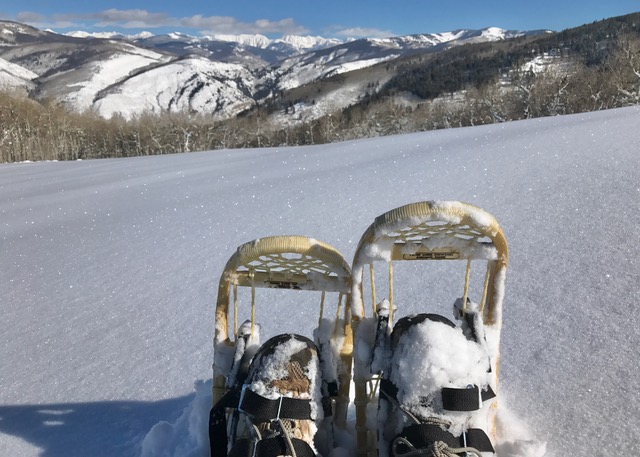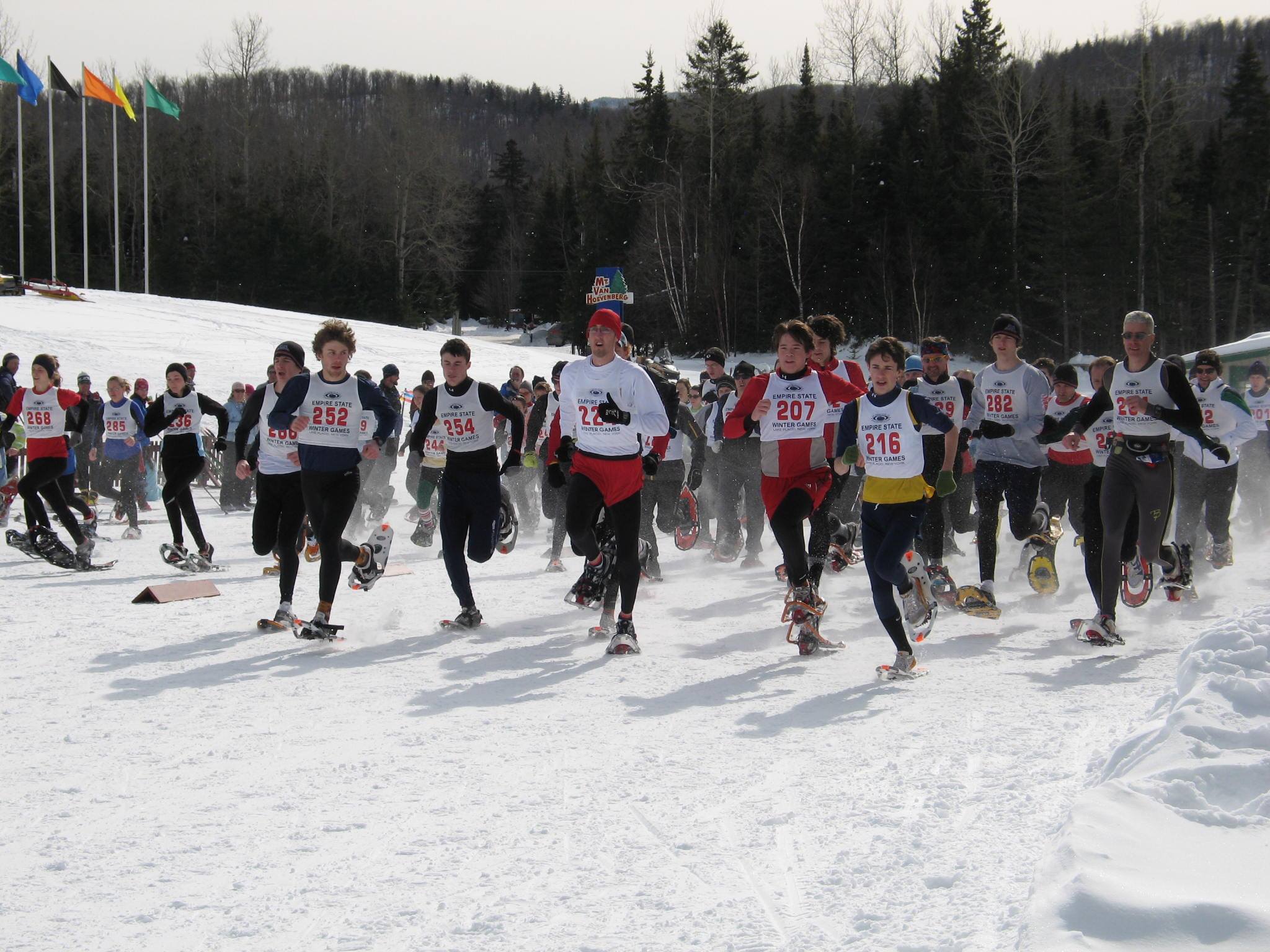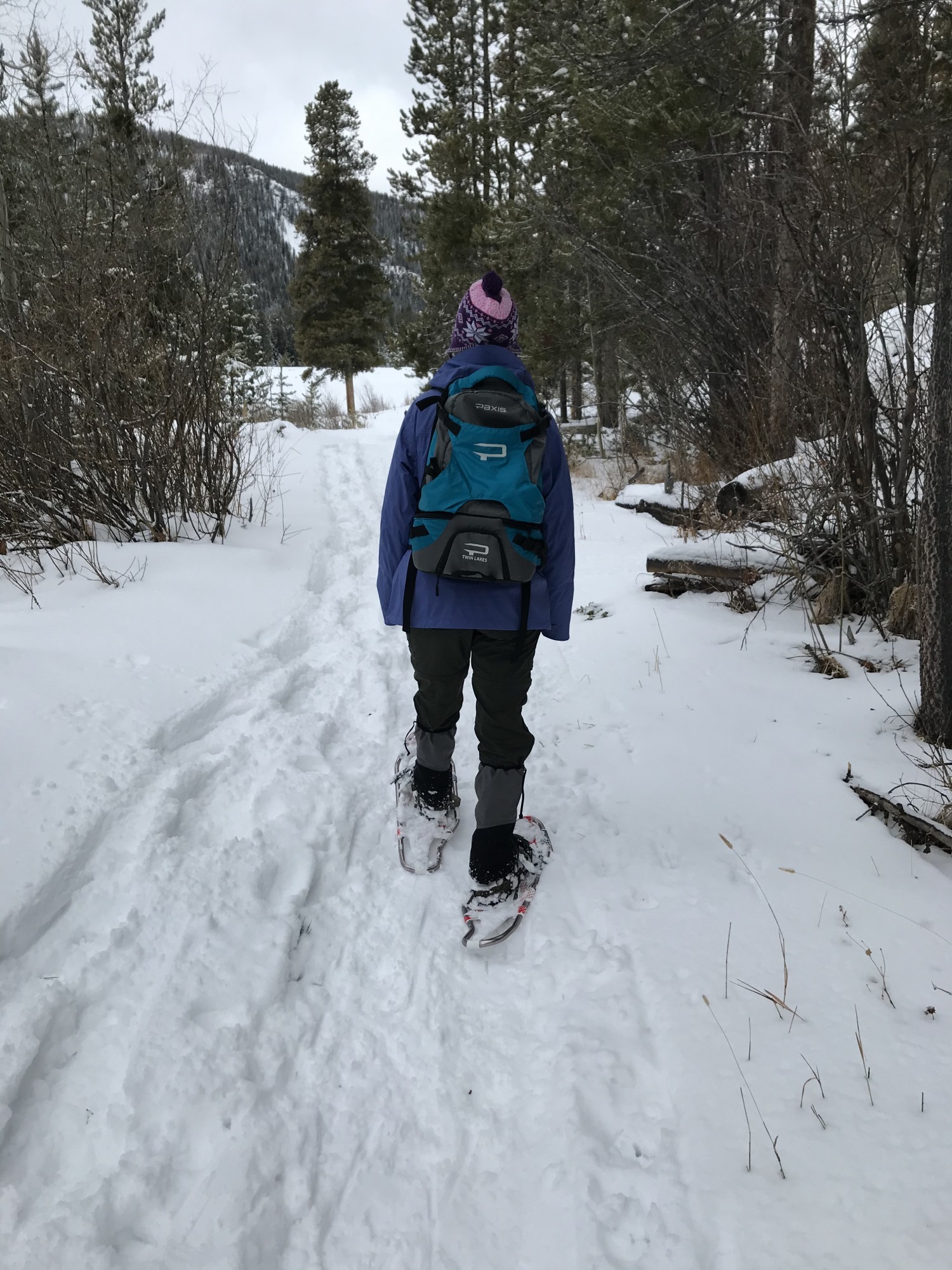Stephen Cobb of the USSSA submitted this interesting information on the Special Olympics Snowshoe Events. Pay attention. There are plenty of training tips, besides the human emotion, for all of us in these stories . . . .
From the Idaho Statesman, 2/11/09, written by Chadd Cripe
MCCALL, IDAHO – The El Salvador snowshoe racers’ checklist for the Special Olympics World Winter Games in Idaho:
Attend the Opening Ceremony.
Rent their first snowshoes.
See their first snow.
Race.
Oh, and win.
The El Salvadoran team is one of several competing at Ponderosa State Park this week who trained on beach or desert sand to participate in a foreign sport on a foreign surface.
And, perhaps because of their unusual preparation, those teams were extremely successful Tuesday in the first day of medal races.
“Because of what they were using – they were using wooden snowshoes on heavier sand – this is much easier for them,” said El Salvador coach Nelin Pastore, who brought four snowshoers to Idaho.
Jose Diaz, a 13-year-old, collected a gold medal in the 200 meters – a victory that left him thinking about his family. “I am very proud and, of course, I dedicate this to my parents who I love very much,” Diaz said.
El Salvador, a coastal country in Central America, is one of many you’ll find represented in McCall that seem out of place in the World Winter Games. Others include Sudan, Somalia, Kuwait, Libya, Mauritania and Saudi Arabia.
Those countries are the reason that snowshoeing participation doubled from the 2001 Games to the 2005 event, and again between 2005 and 2009. This year’s Games attracted more than 250 snowshoers from 47 countries.
“A lot of the countries train on sand and then they just come over and transfer those skills to running on snow,” said Kelly Zackodnik, the assistant technical delegate from Canada helping to run the snowshoeing event. “It’s growing immensely. They’re bringing small teams, but there are a lot of countries.”
Pastore started his snowshoe team when Special Olympics officials in his country said they were taking a floor hockey team and would be willing to add a few snowshoers to the trip. His snowshoers prepared for up to a year by running, but they only spent six months working on the technique they would need in Idaho.
And they didn’t have snowshoes. Instead, Pastore provided some homemade wooden shoes that were more like cross country skis than the 25-inch metal or plastic shoes that have become common in the sport.
They trained on a beach, a surface much more difficult to navigate than the 400-meter track of packed snow used for competitive snowshoeing.
The team rented its first set of real snowshoes Sunday, the day divisioning began and the athletes got their first look at snow.
“(The athletes) were happy to try anything,” Pastore said. “Some can’t do hockey. Snowshoe, for these kids, was what they could do.”
The two Libyan snowshoers in the World Winter Games also trained on sand – using the beach and the desert. They received their snowshoes four months ago.
Like the El Salvadorans, their training was the hard part.
“They were racing in the sand and it was more difficult because it goes deep,” Libya coach Ezeddin Abdurahman said. “And when they came here, they expected more difficulty than this. They found it’s a lot easier.”
Abdulmagid Said and Ala Elfourawi pushed each other through those workouts. They had not seen snow before the trip, but they did get one day of practice in snow before arriving in McCall.
On Tuesday, each won a gold medal in his division of the 200. Said had the second-fastest time of the day at 35.05 seconds and Elfourawi had the fourth-fastest time at 35.47.
“It’s hard, but I like it and I like what I did here,” Said said.
The Libyans easily surpassed the expectations of their coach.
“They practiced really hard, but I didn’t expect them to do like that because it was a totally different experience,” Abdurahman said.
That experience was the reason the Libyans decided to try snowshoeing in the first place. Libya also has a floor hockey team.
“We want our athletes to experience all kinds of different things,” Abdurahman said.
And now, the story about the 15% rule:
WORLD WINTER SPECIAL OLYMPICS SNOWSHOE COMPETITION:
Written by Jim Tucker, Dean of Fun ~ Paul Smith’s College
I am especially grateful to have worked with a half dozen of awesome volunteers from McCall, Idaho who assisted me with watching every snowshoe athlete in every heat for track violations. Our overall task was to ensure a fair competition, and to make note of any rule infractions. Fortunately, my crew of six was honest and diligent. They were wearing blue WWSO jackets (as were hundreds of other volunteers in McCall at the snowshoe events) while there were approximately six of us in green WWSO Official jackets. It didn’t take too long before the national coaches to recognize me as the one responsible for determining if their athletes were DQ’ed.
The first two days of competition included preliminary events, with all athletes seeded in the finals by ability and prior performance/gender/age. Some of the infractions which resulted in DQ’s include not wearing gloves, running without a snowshoe for more than 3 meters, completing a relay exchange outside the exchange zone, interfering with a fellow competitor, or stopping for longer than 2 minutes due to whatever reason.
We also documented any instance that may have caused a given athlete to perform at less than anticipated finish times. This may include a fall or stumble, equipment malfunction, or merely stopping to catch one’s breath. Everything that we documented had to be signed, bib number/heat number/nation/ and event distance noted; and I needed to get these into the finish tent ASAP. The blue jacketed assistants did an outstanding job of getting these to me immediately after each heat and returned to their respective observation point. I had to make notations and turn these into Debbie who was on a computer in the tent, connected to the SOI (Special Olympic International) computers in Boise, where results were immediately posted. It was crucial that I get each notation to Debbie immediately, so clacked in changes were kept to a minimum…
The opportunity to meet coaches from so many nations, including over a dozen that I would be challenged to remember or pronounce was awe-inspiring. So many of these athletes came to Idaho from tropical or equatorial desert countries where snow could not be found for training. As noted in the attached article, many of these athletes performed exceptionally well at the World Winter Special Olympics last week. I was especially impressed to see the sprinters from Saudi Arabia as well as the top Russians. The Hungarian men and women excelled at the 200 and 400 meters, but the top Hungarian woman could easily medal at our Empire State Games.
Slovenia brought two athletes (one man/one woman) and these two did quite well in the 200/400 meters. Each participating nation had athletes who no doubt left a mark on each of us who watched the full week’s events. On the first day, we watched a young Bolivian woman lose her snowshoe at about the 200 meter mark of the 800. Of course, my blue jacketed volunteer started her stop watch. I came over, and could see the young athlete look up at us with questioning eyes, and carefully removed her gloves, and looking at her snowshoe, she figured out how to re-attach it to her feet. She put back on her gloves, and then slowly trod off. One minute and forty seconds… About 75 meters later, she again lost her snowshoe, and repeated the task. This time it took her 1:45. She completed the 800 meters with a genuine look of satisfaction on her face, and we were able to avoid DQ’ing her for the 2 minute rule.
< BR>Three days later, due to her seeding time, she was ranked in an 800 meter final solely based upon her preliminary time. The coach failed to submit an appeal based upon her nearly 4 minutes of struggling with her snowshoe binding. Of course she did extremely well in the finals as she saw the glory of a gold medal looming; but both she and her coach were unfamiliar with the 15% rule used in Special Olympics to help maintain ability groupings. This Bolivian athlete was disqualified by the computer system in the finals, as she had improved by more than 15% in the finals over her previous best performance, so she received no WWSO medal.
Fortunately, (I guess) this DQ had nothing to do with my blue crew nor my position as Chief Judge of Race, but truly sad none-the-less.
There were probably over a dozen athletes who were DQ’ed as a result of the 15% ruling, and of course most of these were athletes who had not previously competed/trained on snow as they prepared for this World Championships. There is little doubt that given their acclimation to the snow and the snowshoes, they will show dramatic improvement in a few short days. These athletes will adapt to the over 5,000 elevation, the new surroundings, getting caught up on sleep, wearing strange clothing such as gloves, a winter hat, snow pants, and a winter jacket. There were dozens of adjustments that had to be made by these first-time world travelers, and yet none of this is taken into account for the athletes who come to the games with this 15% ruling.”
Thanks to Stephen Cobb, Webmaster of the United States Snowshoe Association, for gathering these two pieces so all could share in the joy of snowshoeing in the Special Olympics. Thanks also to Jim Tucker of Paul Smith’s College.
The Idaho Statesman and Chad Cripe provided the story of the Salvadoran Snowshoe Team through Stephen Cobb. Here is a link to the paper:
http://www.idahostatesman.com/1266/story/664191.html.





